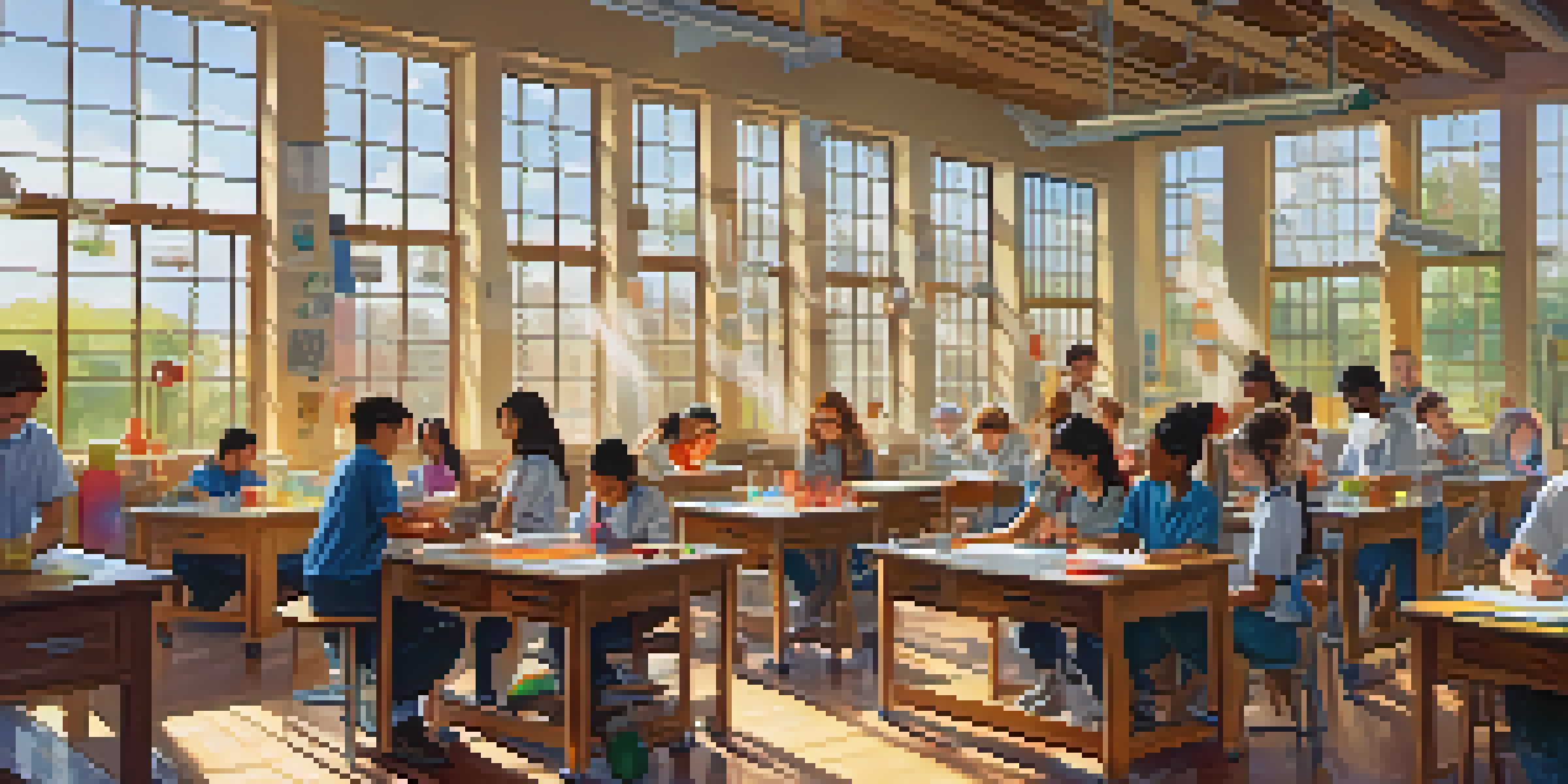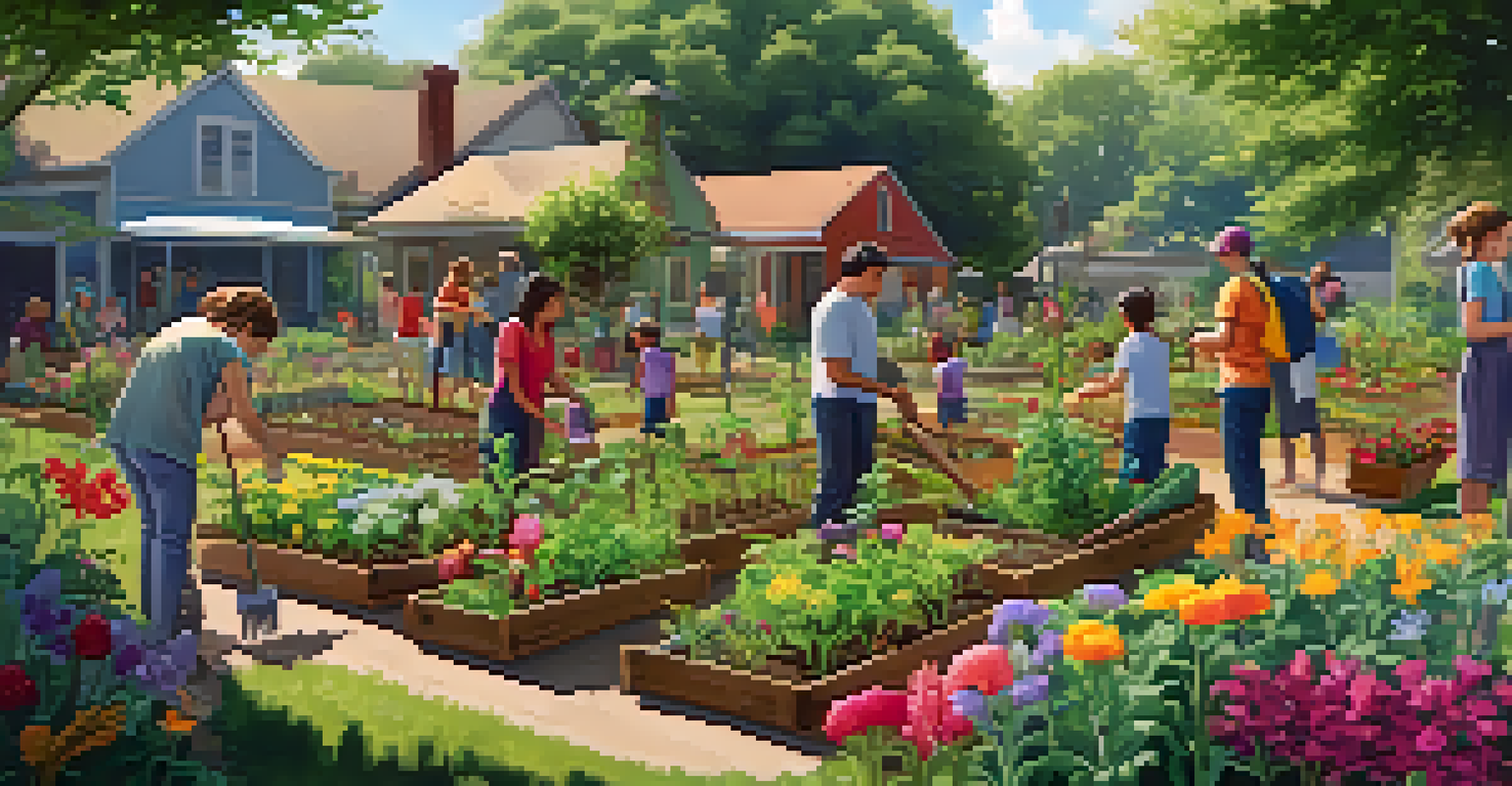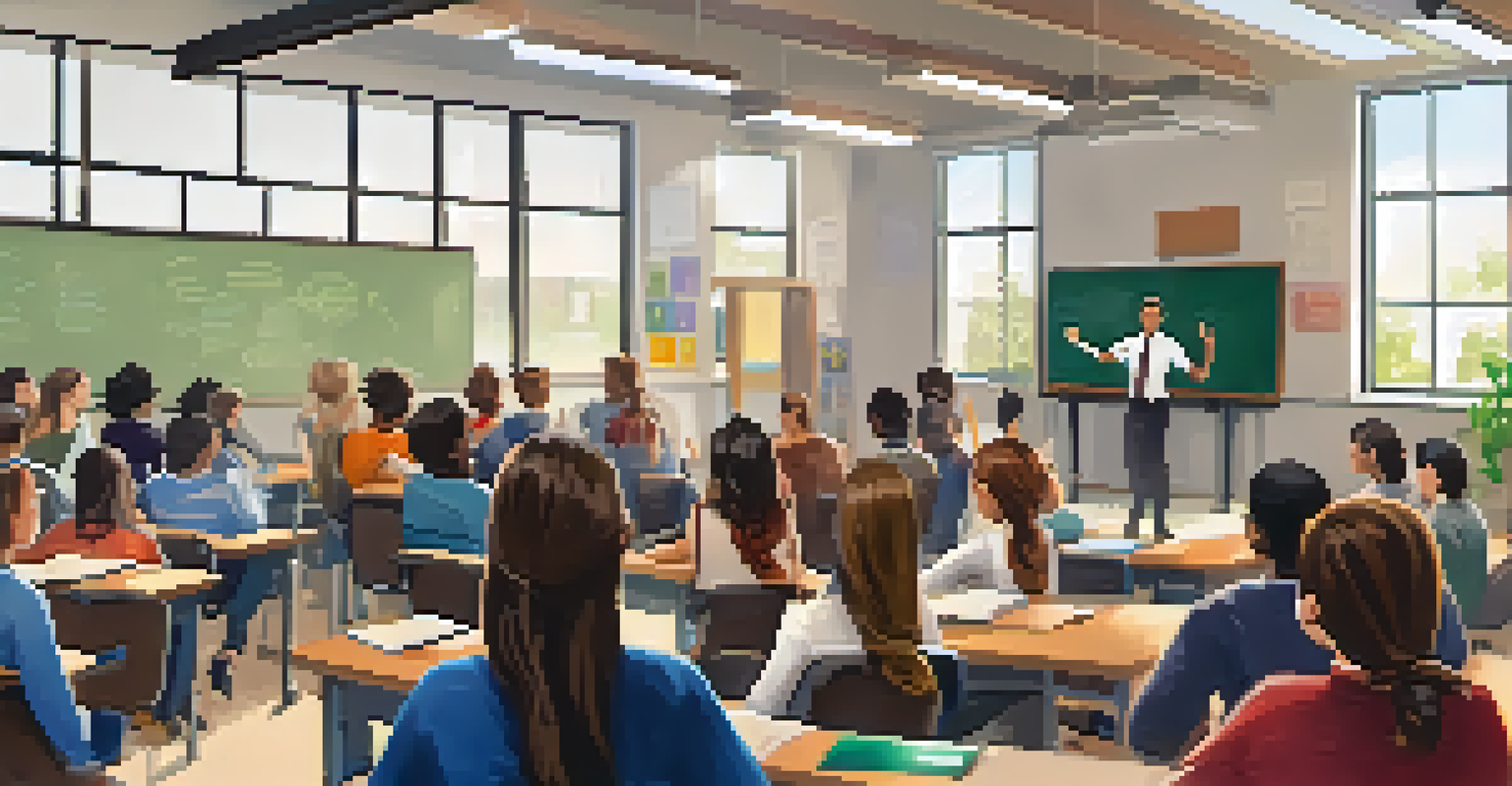Using Community Resources to Enhance Classroom Learning

Understanding the Value of Community Resources in Education
Community resources play a crucial role in enhancing the learning experience. They provide students with real-world connections to the curriculum, making education more relevant and engaging. By tapping into local libraries, museums, and organizations, educators can create a rich tapestry of resources that supports diverse learning styles.
Education is not the filling of a pail, but the lighting of a fire.
Moreover, these resources often come with knowledgeable individuals who can share their expertise and experiences. This interaction not only enhances students' understanding but also inspires them by showing practical applications of their studies. For instance, a visit from a local scientist can ignite a passion for STEM subjects in young minds.
Ultimately, leveraging community resources fosters a collaborative spirit between schools and their neighborhoods. This partnership nurtures a sense of belonging and investment in students' education, making learning a communal effort rather than a solitary pursuit.
Identifying Local Resources That Support Learning
The first step in enhancing classroom learning is identifying which community resources are available. Local libraries are a treasure trove of knowledge, offering books, workshops, and events that can complement classroom learning. Schools can also look into partnerships with nearby museums, art galleries, and historical sites that provide hands-on learning opportunities.

Additionally, local businesses and organizations often have programs aimed at educational outreach. For example, a local farm might offer field trips that teach students about agriculture and sustainability. By reaching out to these establishments, educators can discover unique resources that align with their curriculum.
Community Resources Enrich Learning
Utilizing community resources enhances the educational experience by creating real-world connections and engaging students.
In this process, it’s essential to involve students and parents in identifying what resources they value. This inclusion not only empowers the community but also ensures that the resources chosen resonate with the students’ interests and needs.
Building Partnerships with Community Organizations
Creating partnerships with community organizations can significantly enhance classroom learning. Schools can approach local nonprofits, cultural institutions, and businesses to establish collaborations that benefit both the students and the community. These partnerships can lead to internships, mentorships, and even guest speakers who enrich the classroom experience.
The best way to find yourself is to lose yourself in the service of others.
For instance, a local environmental organization could partner with a science class to provide fieldwork opportunities. Students might participate in conservation projects, allowing them to apply their classroom knowledge in real-world settings. This practical application solidifies their learning and fosters a sense of civic responsibility.
Effective communication is key to building these partnerships. Educators should articulate their goals and how the collaboration can benefit the community, ensuring a mutually beneficial relationship. When both parties understand the value of their partnership, it can lead to innovative educational opportunities.
Incorporating Field Trips to Enhance Learning
Field trips are a fantastic way to utilize community resources and bring lessons to life. Whether it's visiting a local museum or attending a community event, these experiences allow students to connect with their learning outside the classroom. Such trips can spark curiosity and deepen understanding in ways that textbooks alone cannot.
Teachers can design field trips that align with their curriculum, ensuring that students are making meaningful connections. For example, a history class might visit a historical landmark where students can engage with the past directly, making it more tangible and memorable. This experiential learning encourages students to think critically and ask questions.
Partnerships Foster Collaborative Spirit
Building partnerships with local organizations and experts encourages collaboration that benefits both students and the community.
Moreover, field trips foster teamwork and social skills as students collaborate and interact with their peers in new environments. These outings create lasting memories and a sense of excitement about learning, reinforcing the idea that education extends beyond the classroom walls.
Utilizing Local Experts for Guest Lectures
Inviting local experts to speak in the classroom can greatly enrich the learning experience. These professionals bring real-world knowledge and experiences that can inspire students. Whether it's a local artist, scientist, or entrepreneur, their insights can provide students with a glimpse into potential career paths and the skills needed to succeed.
For example, a guest lecture from a local author can enhance a literature lesson by providing context and depth to the texts being studied. Students have the chance to ask questions and engage in discussions, making the learning process more interactive. This connection can make literature come alive in a way that reading alone cannot achieve.
Additionally, these guest lectures can help students develop networking skills and understand the importance of community connections. When students see professionals from their own community succeed, it can motivate them to explore their own aspirations and dreams.
Creating Service-Learning Opportunities
Service-learning is an effective way to combine community involvement with educational outcomes. By engaging in community service projects, students can apply their classroom knowledge to real-world challenges. This hands-on approach not only reinforces learning but also cultivates a sense of responsibility and empathy among students.
For instance, students might work on a community garden project, learning about biology and environmental science while giving back to their community. This experience allows them to see the practical implications of their studies and understand the value of teamwork and collaboration.
Engaging Families Supports Education
Involving parents and families in the learning process strengthens community ties and promotes a culture of lifelong learning.
Furthermore, service-learning can enhance students' social awareness and critical thinking skills. By addressing community needs, students learn to analyze problems and develop solutions, preparing them for future challenges both in and out of the classroom.
Engaging Parents and Families in the Learning Process
Involving parents and families in the learning process can amplify the impact of community resources. When families engage with local organizations or participate in school events, it strengthens the connection between the school and the community. This involvement not only enriches the educational experience but also fosters a supportive learning environment.
For example, schools can invite parents to share their professional expertise during career days or workshops. This not only provides students with diverse perspectives but also helps parents feel more connected to their children’s education. It’s a way to bridge the gap between home and school, making learning a community affair.

Moreover, families can support learning at home by utilizing local resources like libraries or community centers. Encouraging family participation in educational activities reinforces the idea that learning extends beyond school hours, creating a culture of lifelong learning.